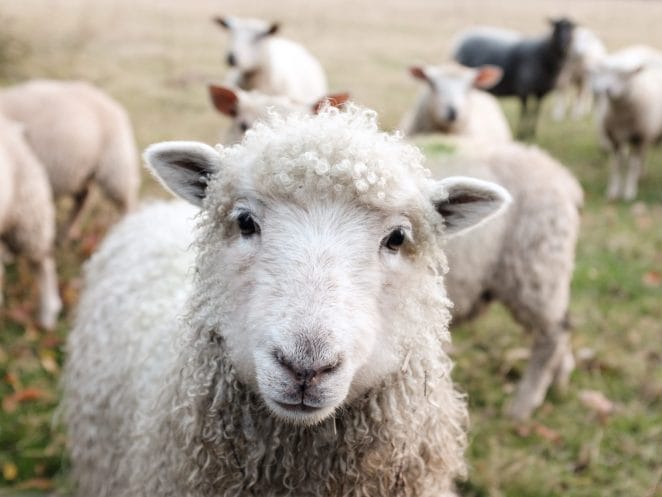Interactions between people and animals are intriguing all across the world. It is one that transcends both place and time.
Despite all of our scientific and technical advances, we are unable to exactly duplicate their contributions to food, clothes, and energy.
Not to mention all the intangible benefits that come with close human-animal relationships and benefit our civilizations.
There are a lot of livestock facts to look through because different animals, such as cows, pigs, goats, and sheep, may reside on a farm.
However, some of them truly stick out. As if you needed more justification for loving our wonderful farm animals, here are some interesting facts about them.
Proteins From Animal Sources Are Dominant
Meat is here to stay, despite the “plant-based” protein trend’s current popularity. Over 68% of the protein consumed globally comes from animal sources.
Livestock animals are the preferred source of protein for a number of reasons, including dietary preference or need, in both developing and developed nations.
In actuality, just 11% of the surface of the Earth is suitable for crop cultivation.
However, a significant portion of it supplies enough food for cattle to survive and convert to consumables like milk and meat.
Farm Animals Can Be Infected With Lice
Cattle lice itch and rub, which leads to hair loss and a less-than-stellar coat. Treatment is not always necessary for cattle with skin issues brought on by a lice infestation.
Occasionally, lice treatment will be necessary depending on how many animals in the mob are afflicted and how severe the symptoms are.
By establishing the existence of lice by a skin examination of the animal, the first step in managing the issue is to rule out other causes of skin disease.
The choice of a course of treatment can then be considered. When spreading from one animal to another, lice use direct touch to complete their whole life cycle on the host.
Biting lice consume dead skin cells, hair, and oil secretions, whereas sucking lice consume blood.

Livestock Make More Than Just Food – They Provide Byproducts
Speaking of animal goods, we haven’t even considered the additional uses they serve through their byproducts.
Many individuals are unaware of how many common items are available to them because of substances obtained from cattle.
Let’s begin with the immensely different species of pigs. Their bones produce glycerin that may be used to create explosives and antifreeze, while their skin is utilized on products like chases and high-end violin strings.
Similar to this, beef tallow may be found in items like crayons, candles, and lipstick.
Let’s not forget leather, of course. Even the traditional “pigskin” of American football is now more frequently made of cowhide or vulcanized rubber.
Even unwanted animal parts have a market worth beyond manufacture.
You Can Grow Food for Your Livestock
You are probably raising cattle and poultry together, and you may have thought of producing animal feed to make ends meet.
Some claim that it alleviates some of the concerns associated with keeping cattle, but it may be an additional burden for other farmers.
Starting your own farm is the best way to produce animal feed. The variety of crops available and how simple it is to produce them yourself may amaze you.
Corn
Farmers have been using this nutrient-rich cattle feed for a long time. One of the key components of animal farm feed is regarded to be corn.
If you have enough planting acreage, you can easily cultivate the healthiest varieties of corn, such as sweet, grazing, or dent corn.
Pumpkins
Pumpkins and squash should be on your list of crops to plant for animal feeding. They include a lot of protein, healthy fats, and fiber.
Winter is a period when pumpkins and squash are also cultivated, so you shouldn’t have any issues with your feeding stock then.
Even though it is a fruit, you may eat it and feed the leftovers to your animals.
Carrots
Because of its high beta-carotene content, this root crop is highly recommended. It also makes a great winter feed for animals.
Carrots are the major ingredient in cow feed if you’re wondering how to cultivate them. Carrots may grow in any type of vegetative setting.
Given that they survive longer than smaller types, you might choose to select the larger variety.
Domestication Probably Started with Goats
Goats are undoubtedly among the most historically significant animals while appearing to be a “small” species throughout the majority of the industrialized world.
According to many academics and archaeologists, there is compelling evidence that goats were domesticated first, then sheep.
This is due to a variety of factors, including their optimal size, adaptability, and habitat sharing with our old nomadic ancestors.
There Is Much More Pollution Near Animal Farms
The amount of waste produced by housing so many animals in one area exceeds what the nearby land can handle.
Factory farms are linked to a number of environmental risks, including air, water, and land pollution.

A lot of responsibility goes into farming. For the purpose of raising and creating a high-quality, wholesome, and delectable product, daily care for animals and plants is necessary.
On every farm, everyday activities include constructing and repairing, cleaning and grooming, feeding and watering, and cleaning.
Therefore, it’s crucial to get as much information as you can about cattle so that you may get to know them better.


GIPHY App Key not set. Please check settings